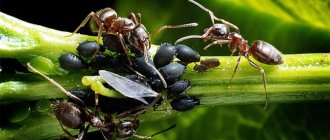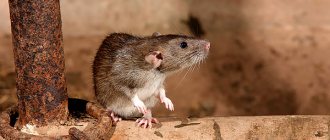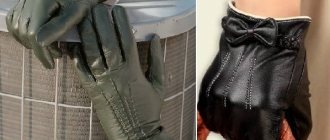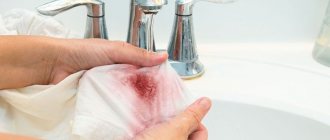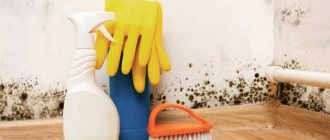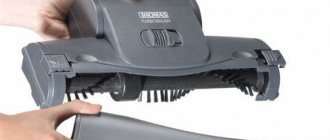Folk remedies for household pests
The modern market is oversaturated with various insect control products. All of them contain aggressive substances. For this reason, people prefer folk remedies that cause minimal harm and give positive results when used systematically.
Their essence lies in 3 areas:
- repelling ants using plants, products, etc.;
- luring insects for further destruction/removal outside the home;
- poisoning.
The effectiveness of such remedies has been proven over decades and the experience of millions of people, which is why folk recipes are popular.
Preventive measures
It is easier to prevent uninvited guests from appearing than to try to get them out. So try to follow simple rules:
- regularly carry out wet cleaning, including using active substances that can repel insects;
- Pack food carefully and do not store it in places accessible to ants;
- make sure that there are no unsealed cracks in the walls and floors;
- remove dog and cat food after animals eat;
- Treat all areas where ants may enter with chalk or gel.
Lures
The purpose of baits is to lure all insects at the same time to one place, where a trap or poisonous substances awaits them. For this purpose, products are used that have a pleasant aroma for ants (to attract them).
With boric acid
This is a recognized substance among gardeners. To prepare the product, a powder mixture is used, which can be purchased at a pharmacy.
Peculiarities:
- a weak concentration of the substance does not destroy immediately, it acts gradually (the ant, returning to its home, regurgitates the remains of food with acid, as a result of which it poisons all other family members);
- strong concentration kills instantly;
- boric acid helps to sterilize females and males, so the reproduction process stops.
Best recipes:
- Add 20 g of boric acid to 400 ml of water. Add a little jam, honey or sugar to attract. Use the liquid to trap (pour into open bottles) or spray the paths of insects.
- Take mashed potatoes or minced meat, mix in a 2:1 ratio with acid. Form into balls and place in a place accessible to insects.
- In 1 tsp. (5 g) boric acid, add boiled or raw egg yolks (4 pcs.). Pour in a little fragrant vegetable oil and stir in enough flour to form flour crumbs. Scatter it in the favorite areas of insects.
- Combine 1 tsp. acids with 4 tsp. glycerin, 1 tbsp. l. water and sugar (the amount is arbitrary). Make balls. Place them in areas where ants often appear.
It is recommended to leave the bait for a month. Additionally, the poison will destroy cockroaches.
With borax
Borax is considered as effective as boric acid. Compositions are made from it:
- 1 part granulated sugar, 0.5 parts substance. Place in lids from jars and plastic bottles. Place containers near potential anthills.
- To the same mixture, add water mixed with honey to form a paste. Used against house ants. Apply the mixture onto pieces of cardboard and place it on the floor.
With baking soda and cereals
The alkaline substance destroys ants. It is enough to sprinkle soda on the path along which insects move or fill up the entrance through which they enter the house.
The second option is to mix soda with water until a paste forms, adding a little honey. Pour into caps. Place the containers at a short distance from the ants’ homes.
The safest method is to scatter millet grains on the floor or pour them into an anthill. The principle of action is that millet, when mixed with gastric juice, swells greatly and clogs the stomach. The process leads to the death of the pest.
With starch and yeast
The yeast, after being eaten, swells in the ant's stomach. Starchy substances affect the gastrointestinal tract. This is fatal to the insect. The products are used individually or together:
- Dissolve the yeast in warm water, adding a little honey. Pour into the caps. Place it around the apartment.
- Sprinkle the anthill with a dry mixture of starch, ground black pepper and salt.
Additionally, you can add a little boric acid to the composition.
Sweet baits
Ants have a big sweet tooth. This is especially true for domestic pests. They can often be seen near sugar bowls and saucers with jam. Sweet baits are designed for this weakness.
First way:
- Pour 2 tbsp into 200 ml of water. l. sugar or 1 tbsp. l. honey/jam.
- Pour the solution into a shallow container. Place it on the floor. Ants, hoping for a “sweet treat,” will drown in the liquid.
Second method:
- Spread 2–3 mm thick stationery glue over a piece of cardboard.
- Place a treat (sugar, honey, jam, candy, etc.) in the center.
- Place the trap in the area with the greatest concentration of insects.
Most often, ants crawl towards such a trap at night. The downside is that the glue dries quickly, so you have to make a new trap every evening.
Starch
The principle of action of this substance is approximately the same as that of semolina. But no one will eat it just like that. But don’t despair - you just need to pour starch near the place where insects accumulate, and place a container with bait in the center - a spoonful of honey, jam, syrup. Then he will definitely stick to the paws of all the individuals making their way to the treat. While cleaning it, the ant will swallow a sufficient amount and take the remains to the colony, thus poisoning its fellow tribesmen.
Repellers
This method involves the use of products that have an odor that ants cannot tolerate. As a result, insects will begin to leave the house.
Plants
The gentle method involves the use of fresh and dried plants. These include spices and seasonings.
Ants cannot tolerate:
- mint, lavender, parsley, chamomile - herbs are hung in the kitchen or laid out in places where insects often appear;
- anise, cloves, bay leaf, hot peppers - pour seasonings into fabric bags and hang them at the bottom of the wall closer to the floor;
- garlic - cut the cloves in half, spread around the room or lubricate the ant paths with juice;
- lemon - application is identical to the previous one;
- geranium - growing indoor plants on windowsills.
Essential oils
There are benefits to using essential oils. The smell does not disappear for a long time, the aroma spreads over a large area. Contraindication: allergic reaction. Cannot be used if infants and children 2–3 years old live in the home.
Effective oils:
- orange;
- eucalyptus;
- mint;
- juniper;
- fir;
- needles.
Application options:
- mix with water, spray or wash the floor;
- put a jar of oil in an open position;
- light incense sticks.
Vinegar, ammonia and other means
Pharmaceutical preparations are also widely used to control pests. One of them is ammonia. Ants cannot tolerate the ammonia smell.
How to prepare and use the product:
- Pour one bottle of ammonia (100 ml) into 1 liter of water.
- Treat all surfaces on which insects move.
- Wash the floor.
Ammonia has a pungent odor. Children, allergy sufferers and pets should not be present in the room being treated. The use of a respirator is mandatory. The “aroma” disappears after 25–35 minutes.
Other means:
- Take vinegar, soak a piece of cloth in it, wipe the baseboards, floor, table and chair legs, trash can, walls.
- Apply Vaseline to the entrances through which ants enter the apartment.
- Place tobacco from 1 cigarette in 200 ml of water, let it brew for 24 hours, add 2-4 drops of iodine, spray around the room.
- Draw chalk “barriers” through which insects will not crawl.
Food products
There are a number of food products with odors that are unacceptable to pests. Most of all, ants don't like coffee. To repel, burnt natural grains (insoluble analogue) are used. Place the grains around the room in random order or leave an open jar on the table.
Other repellent products:
- Peel the orange/grapefruit and place the peel around the house;
- leave smoked sausage, lard, etc. in the kitchen;
- buy smoking liquid, soak the sawdust in it, put it in open containers, and place it in the room.
Modern chemistry
Today on store shelves there is a wide range of special preparations for ants. The price range is very wide, and everyone can choose a product that suits their budget.
Modern chemistry is quite effective, but it also has side effects: before carrying out disinfestation, it is better to vacate the premises and remove children and pets. Many pesticides can only be used outdoors. Before starting treatment, be sure to carefully read the instructions, follow the dosage and do not forget about personal protective equipment (respirator and rubber gloves).
Modern chemistry against ants is quite effective. But don’t forget about personal protective equipment (respirator and rubber gloves)
Experienced experts advise using different versions of pesticides from different manufacturers, since ants quickly adapt to one type of poison.
To get rid of ants in an apartment, it is best to practice an integrated approach. Aerosols help control worker ants and destroy some nests. Powders and traps with granules can destroy ant nests and the queen. Pencils, gels and crayons serve as excellent prevention and repel new insects.
Remember: family members and pets should not be in the house during aerosol treatment. All food, linen and personal items must be securely hidden.
Let's look at the list of the most popular and effective chemical agents for ants today:
- insecticidal aerosols - “Raptor”, “Get” and “Raid”;
- gels and pencils - “Pinetrum”, “Mashenka”, “Global”, “Fas”, “Storm” and “Raptor”;
- granules and microcapsules - “Xulat”, “Thunder”, “Delicia”, “Spider” and “Kombat Super Atak”;
- powders – “Delicia”, “Bros”, “Chlorophos”, “Aspid”.
In addition to chemical agents, ultrasonic repellers are widely available on sale. However, in practice such devices do not work. Those electromagnetic waves and ultrasound, which are not audible to us, also do not affect ants. You can scare off insects with more powerful waves, but they are also harmful to humans.
When choosing aerosols against ants, pay attention to the presence of substances such as cypermethrin, tetramethrin. They are the ones who ensure the high effectiveness of the drugs.
If you have the opportunity to leave your home for 2-3 days, you can invite specialists and carry out professional pest control
Rules for getting ants out of your home
The main reason for entering a house is the search for food, drink and warmth. Ants are most often localized in the kitchen. After entering the house, insects form nests that are inaccessible to humans (behind baseboards, etc.).
In the fight, the first thing to do is to discover the anthill. To do this, you should study the vital activity of insects.
Organization of ant life
House ants are organized individuals with excellent memory. If they find food once, they return to this place again, bringing relatives with them.
Before entering the house, ants can settle in garbage chutes, garbage cans and other places where rot accumulates. They are carriers of infection.
Ant colonies are used to migrating. They can travel long distances to find food. There is a scout in their family who is the first to set off. After finding a favorable place, he leads the others.
Other features:
- these insects are not picky eaters, but prefer meat products and sweets;
- It is important for them that the room be warm;
- the queen ant is always hiding, laying eggs;
- Foragers (working individuals) always move along a certain path when they return to the anthill (they leave behind a trail of pheromones, along which they again go to the food source).
You can't kill insects that get food. They feed the queen and other workers who are designed to care for the offspring. It is important that the brothers bring poisoned food to the “house” to feed the queen. This is why boric acid cannot be diluted in strong concentrations.
How do ants get into the house?
Small insects use various options for entering a person’s home.
Methods:
- through cracks and openings (in doors, windows, walls);
- through the ventilation and piping system;
- from the basement;
- brought into the house with fruits and vegetables, food, and any items from the street;
- carried on shoes.
Maintaining a cleaning routine
Keeping your home clean is an important factor in pest control.
Simple rules of sanitation:
- do not leave food on the table, floor or other surfaces, wipe away crumbs, etc.;
- close the trash can with a tight lid, regularly remove garbage from the apartment;
- wipe the sink dry, do not leave water open (ants are attracted to moisture);
- wash and dry cat/dog dishes;
- Wash the floor more often with special cleaning products or vinegar.
Why ants settle in houses, why they are dangerous and how to deal with them - watch the video.
Causes of insects
If you find that your home has been visited by these annoying guests, first answer the following questions:
- Do dishes often remain unwashed immediately after eating?
- Is the trash can open?
- Is your apartment cleaned daily?
- Is there food in unclosed containers?
The answers to these questions should help you understand why insects appeared. To get rid of them, you will need to correct the situation by eliminating the main cause of the spread of pests in your home.
Important! At a minimum, you will need to maintain perfect order for at least 3-7 days and not leave food open - it attracts these insects.
Folk remedies for fighting ants in the garden
The use of folk remedies to get rid of ants in the garden is justified by the fact that chemical poisons will not penetrate into the soil, which happens when using store-bought products. Some substances require careful handling.
Boiling water and kerosene
A simple method is to fill the anthill with boiling water.
How to do it:
- Find an anthill and stir it with a shovel, which will allow the boiling water to penetrate deeper.
- Pour in 4-6 liters of hot water.
- Repeat the procedure 3-4 times.
To enhance the effect, add vinegar, essential oil, etc. to the water. The disadvantage of this method is that the pests will most likely move the anthill to another place in the same area.
A more effective way is to use kerosene. There are 2 options:
- Dilute 5 tbsp in 5 liters of water. l. kerosene. Pour into the anthill.
- Soak rags in clean kerosene and place them around the anthill. Avoid contact with plants.
Ash, pepper, mustard powder
A useful method is to use ash, which is a natural fertilizer. The ash solution destroys ants and aphids. For prevention, ash is scattered around the garden or placed in holes with seedlings.
To fight, you will have to prepare an infusion. There are 2 recipes:
- Add 3 kg of wood ash to 10 liters of water, leave for 48 hours, strain, add 100 g of crushed laundry soap. Pour into the anthill.
- Add 150 g of ash to boiling water (500 ml), simmer over low heat for 30–40 minutes. Dilute with water to a volume of 5 liters, add 50 g of laundry soap. Fill the anthill.
Ants are afraid of hot peppers. You can use ground black and red product. To process it, just sprinkle the spice on the anthill and the paths along which the insects move.
Another option:
- Buy an alcohol-based tincture of capsicum at the pharmacy.
- Dilute with water in a ratio of 1:7.
- Pour into the nest.
Ants will not come running to your garden plot if you sprinkle it with mustard powder around the entire perimeter. It will not be possible to get rid of a large number of insects using mustard. If there are still few pests, the following action will help:
- Prepare a solution of 10 liters of warm water and 100 g of mustard powder.
- Pour into the anthill. Additionally, spray nearby growing plants.
Recipes with soda
There are 3 ways to treat your garden with baking soda when fighting ants.
Application:
- Mix baking soda (kills) with powdered sugar (attracts with smell) in equal proportions. Sprinkle the anthill generously.
- Add 5-6 tbsp to 2 liters of boiling water. soda Fill the nest and cover with plastic wrap.
- Fill the anthill with baking soda and pour vinegar on top.
The last method is considered the most effective of all baking soda recipes.
Treatment with tar and lime
Lime is often used by gardeners to normalize soil acidity (lower pH). At the same time, the substance destroys pests. Pour dry lime into the anthill or make a lime mortar (as for whitewashing trees) and pour it into the nest.
For ants, mole crickets and aphids, birch tar and ordinary tar soap are used.
Methods:
- For 10 liters of warm water you need 100 g of soap, 5 tbsp. l. tar.
- Mix tar and sawdust in equal proportions, pour boiling water over it so that you get a steamed mass (not liquid).
Pour the mixture and place it on the ant hills. Repeat the procedure 3-4 times.
Ammonia and urine
Ammonia is rich in nitrogen, so the gardener does not risk anything when using it in the garden.
Recipes:
- Stir 100 ml of ammonia in 1 liter of water, pour the solution into the anthill.
- Periodically water the beds with ammonia solution - 5 ml of alcohol per 5 liters of water.
If you need to destroy aphids, spray the affected plants with a solution of 8 liters of water and 1 tbsp. l. ammonia.
A slightly strange but effective way is to use urine. To do this, the anthill needs to be filled with urine, since uric and hippuric acid kill pests.
What types of ants are there?
In our country, more than 260 species of ants are found in nature, but not all of them can adapt to living next to people. Mostly, those families of insects that cannot withstand cold and frost live in private houses. These include:
- Red or pharaoh ants are also popularly known as “house ants”, as they most often appear in the vicinity of humans. Insects are small in size, workers reach 2-2.5 mm, and queens from 4 to 6 mm. They die in cold conditions, so they settle only in heated places.
- Yellow, brown or thief ants. Often appear in private homes. Working individuals are very small, from 1 to 3 mm, the body is colored bright yellow or light brown. Due to their small size, they build compact nests in hard-to-reach places, such as cracks.
- Red or turf. Like the previous species, individuals are very small. The body of the insect can be black or dark red. They choose cracks and cracks as places to live.
- Big black ants. Their anthill may be located not in the house, but, for example, on a personal plot, while working individuals can be noticed by you in the living room, as they are able to travel long distances in search of food.
- Carpenter ants. Large black insects that usually live in forests. Nevertheless, their appearance in the house is possible, especially if it is made of wood.
Also, in the house, along with ordinary ants, flying individuals may appear.
Where do flying individuals come from?
The statement that flying ants are a separate species is erroneous. These are still the same genus of insects. Wings grow in those individuals that are in the mating phase. Most often this occurs in suitable conditions for reproduction, in summer or warm spring. After mating, adult ants in most cases bite off their wings.
How to protect fruit trees?
Ants are excellent at loosening the soil, but they damage the bark of trees. They need to be protected. Special methods are used for this.
Adhesive and repellent belts
To prevent insects from climbing up the trunk, make a repellent belt. There are many options:
- whiten with lime;
- wrap the barrel from below with tape;
- lubricate clotheslines with Vaseline and wrap the tree;
- Apply grease to the barrel.
Tie with foil (slippery side out and sharp edges). Make a design like a skirt.
Wrap polyethylene and coat with tar. Make the belt closer to the ground.
Water ditch and tires
To limit access to the trunk, dig ditches around the perimeter and fill them with cement mixture. When the concrete has hardened, pour in water.
For the same purpose, use tires from car wheels. To do this, cut in the center so that you get 2 rings. Insert through the crown onto the circum-trunk circle upside down. Pour water.
The second option is convenient when the tree is massive and it is impossible to thread a rubber ring through the crown. In this case, the tire is cut and inserted under the tree, and the cut edges are fastened with staples, etc.
To prevent insects from moving to the trunk, the rubber is lubricated with turpentine, oil and other oil-based substances.
Ways to protect trees
To protect trees from ants, gardeners use various options, this is not only spraying, treating the trunk, there are other useful tricks.
Tires
To create a barrier you need to use an old tire and water. Manufacturing process:
- Cut the tire into two equal parts.
- Place the half on the tree and bury the tire.
- Pour water inside.
Such a barrier will protect seedlings and bushes well.
water ditch
By analogy with tires, a water ditch is made for a tree. You can use any other container for the ditch.
Hunting belt
Protection helps get rid of about half of the ants on trees. Use is carried out in the spring until the buds appear. This helps protect the crown from pests that survived the winter in the ground. Recommended:
- Place the belt around the trunk and secure it with a rope.
- It will have a special glue on it that is not dangerous to humans. When an ant hits it, it sticks, so it cannot move further.
Alternatively, you can make your own remedies. For example, cut a strip out of cardboard and wrap it around a tree in the shape of a cone. Cover the cracks with clay. Wrap the foil and make it in the shape of a skirt on the trunk; this will prevent the ants from climbing to the crown of the tree.
Scotch
You can use masking tape or other tape to wrap the trunk of the plant to prevent insects from moving around. The use of sticky substances is especially effective.
What to do if folk remedies didn’t help?
If folk remedies do not bring positive results (this happens when there is an excessively abundant invasion of ants), you will have to use store-bought insecticides. They are available in different types:
- aerosol - quickly and conveniently used in an apartment (only working individuals die);
- solution - used in gardens, no need to dilute;
- the powder is universal, can be scattered and diluted in water;
- granular form - used for home and garden (a huge plus - harmful substances do not penetrate the respiratory tract);
- gel - convenient and effective for placement (ants carry the drug to the uterus);
- pencil - acts like a powder and is convenient to apply to walls;
- repeller - an ultrasonic device powered by mains or batteries (harmless to humans);
- trap - a device with gel that is glued to the wall.
When using folk remedies for domestic ants, try to choose those that do not kill insects instantly. Give them the opportunity to carry the poisoned food into the anthill. When fighting garden pests, take into account the percentage of harm to plants and soil. Save chemicals as a last resort.
Remember!
If parasites appear in the house, you can remove ants with vinegar.
- Dilute the acid 70% while wearing gloves.
- 100% elimination of parasites – destruction of the uterus and anthill.
- Do not use the oil solution indoors.
- Carry out treatment in the house when the family is away.
- Preventive measures should be carried out once a week.
If you found this article useful, leave a comment and tell us about your own experience in dealing with ants.
Source
What else can you use to get rid of ants on your property?
These insects hate anything that has a powdery consistency - it is worth remembering this feature. To rid these annoying pests from your garden, in addition to the above-described remedies, you can use ingredients from our kitchen such as:
- regular flour
- salt and talc,
- semolina,
- salt.
All of these products are excellent at repelling ants, and some can kill them. Identify insect paths and sprinkle semolina or salt to repel them from the garden.
This article uses materials from balconygardenweb.com
Calling an exterminator
If all methods have been in vain, and you do not know how to get rid of ants in the house on your own, you can call an organization that provides pest control services. This is especially true if the main ant nest has not been found.
Specialists will treat the premises with special chemicals, so during the period of disinfestation it is better to leave the house, for example, to visit relatives. In an apartment building where ants have settled, you can involve neighbors in the fight. Calling exterminators together will cost less. Additionally, treating your attic, basement, and stairwells will help prevent ants from appearing again.
Before processing, kitchen table drawers must be cleared of dishes and food. You will also need to temporarily remove all moveable things from the room - dishes, toys, chairs, vases, flower pots.
The treatment itself takes about an hour, but the toxic substances on the surfaces should remain for 24 hours, and start wet cleaning no earlier than after a few weeks. Then not only the adult ants will die, but also their larvae.
